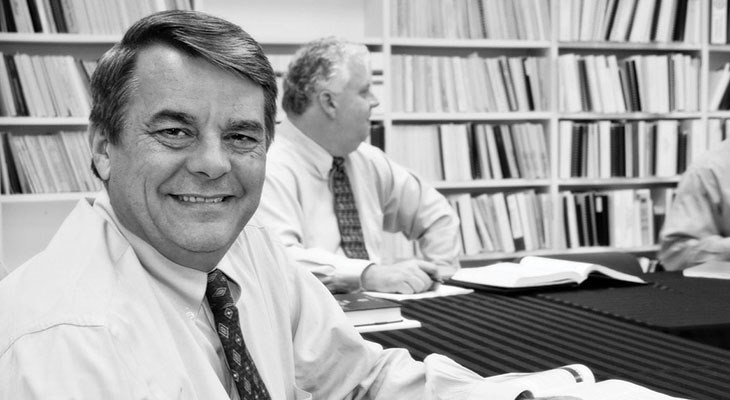Over the past seven years, GAI Consultants Inc. has made three acquisitions, totaling about $5 million in revenue. That’s not a lot for a company that has grown from $90 million in revenue to $160 million over that same time frame.
“The problem we have today with acquisitions is that the market is accelerating, so everybody’s asking top dollar for acquisitions,” says Chairman and CEO Gary DeJidas. “And a lot of them that we’ve looked at, in our minds anyhow, they’re overpriced,”
Instead, the engineering, planning and environmental consulting firm has utilized what it calls strategic hires and strategic startups.
“We’ll go into an area, find some folks that have well-established experience and client relationships and we’ll build an office around those books,” he says. “So, just in the last few years, we started an office in Houston, Texas, and one in Chicago and one in Kansas City, all based on that principle.”
Smart Business Dealmakers spoke with DeJidas about what he’s seeing in today’s deal market and what it’s like under GAI’s employee stock ownership plan.
Why do you prefer to find people and build around them, rather than buying assets?
There’s a real advantage with that, in that when you buy companies, you just never really know what you’re buying. You think you know, and you do your due diligence in hopes of finding out all of the big things, but there are always unexpected things. It could be a liability issue. It could be something undiscovered in due diligence. Whereas if you do a strategic startup, you know the people and the strategic hires, and you’re building a staff without all those unknowns.
It’s just a different strategy. It’s something we’ve had to go to because of where the market is right now with acquisitions and the premium you have to pay for an acquisition.
Is the plan to continue the growth into new areas?
It is. We’re trying to be very cautious right now with all you hear about the economic downturn. We just had a strategic session on recession planning. We set a target date.
We said, ‘OK, what if some of this actually happens? What if, in 2021, there’s an economic downturn like there was in 2007, 2008? How are we going to prepare ourselves?’ We came up with a number of objectives, things that we thought would be important to start thinking about now.
So, we’re always looking ahead, and we will continue to grow, but it’s going to be very careful growth until things become clear to us, whether or not this economic boom that we’ve been into for 10 or 12 years is going to continue.
Our view right now, at least for the next year or so, is to be more conservative, watch our cash, watch our good clients, watch for trends that may be changing in our business.
How long has GAI been an ESOP?
We became an ESOP in 1995. The original founders of the firm — and I wasn’t one of them, the firm was started in 1958 — when they got to retirement, they didn’t have a plan to get their money out of the company.
So, they came to individuals like me, who were at that time coming up in the organization, and said, ‘Have you got a couple million dollars? Do you want to buy our stock?’ And I said, “Well, No. 1, I want to buy your stock, but I don’t have a couple million dollars. I’ve got a mortgage and I’ve got kids.’ So we came up with the ESOP as a way to buy the original owners out.
How has it worked over time?
We’ve never borrowed money against the ESOP. We’ve never leveraged it. We funded it and were able to buy the original seven owners out, but we continue to put money into the ESOP year after year, to the point where now we’ve built up a nest egg of cash in the ESOP. With the ESOP, if you do decide to leave, even if you’re partially vested, that’s your money. You take that with you, just like a 401(k).
It’s been a good model for us in the sense that we have the cash set aside to handle when people retire and leave, or if they leave the company and they’re vested, and it really doesn’t affect our business operations. In other words, we don’t have to dip into our operations to come up with the cash. We set a significant amount of cash aside. We solved one of the big puzzles, that many companies wind up struggling with, which is how do the retiring people get their money out of the company.
As a participant, it’s been great, watching your ESOP grow over all those years. It’s part of my long-range retirement planning. As the guy funding it every year, year after year, putting on average $2 million a year into it, it’s another challenge that makes you have to be a good solid business to come up with that kind of money.
Why is a reserve so important?
We have enough of a reserve that we could probably go two or three years without putting anything more into the ESOP because it continues to grow in value. It owns about 55 percent of the outstanding shares of the company, so as the value of the company continues to grow, your shares continue to grow.
But we’ll always have maybe 10 or 12 people who are cashing out. We do a five-year retirement. You get your money over five years, or if you leave the company, you get your money after a year.
The point is that there are cash needs that have to be funded, and building up a cash reserve to meet those needs, in addition to the growth, is important.




